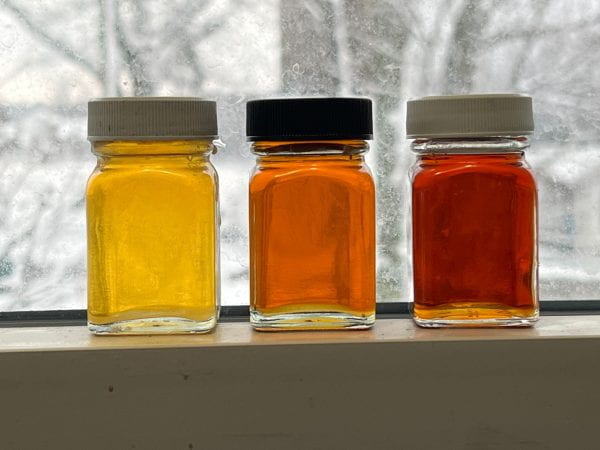Maple grading and syrup quality are major topics at just about every maple winter meeting. Why has this topic taken on a heightened sense of importance? What is driving this interest? As the popularity of maple syrup products continues to grow, we are introducing more new customers to pure maple syrup. As interest grows, so does the number of questions about content, grading and nutritional value. Consumers are curious!
What is the difference between pure maple syrup and table syrup?
Is pure maple syrup truly a superior product?
Is pure maple syrup worth the higher price?
In most stores, you can find maple syrup right above the pancake flour. Shelf space is minimal and is often shared with Log Cabin, Mrs. Butterworth, and other corn syrup derivatives. The first thing consumers notice is that pure maple syrup is substantially more expensive. They may also take time to read the labels. The lower priced competition has a multitude of ingredients. Many ingredients are difficult to pronounce and not something a savvy customer wants to consume. So, they gravitate to the pure maple syrup which contains only one ingredient, Pure Maple Syrup. Many assume that because they are paying a premium price it must be a premium product. Consumers today assume a direct relationship between price and quality, and for the most part, do not mind paying a premium price for something they truly enjoy.
You only have one opportunity to make a good first impression!
There is variability in pure maple syrup sold across the country. There are USDA Standards for color and density. Density is straight forward, at least 66.0 or 66.9, depending on where you live. But grading standards by color can be confusing. To add even more mud to the water, many states do not require grading; color grading is voluntary. Remember, much of the syrup marketed in the US, especially outside the maple producing regions, is sold in box stores.
Most of the time, syrup sold in a box store is good syrup. It is sweet and with an excellent maple flavor, but occasionally there is a surprise. Until a bottle of syrup is opened and tasted, a bad bottle of syrup often looks exactly like good syrup; although, there is a tendency for poor quality syrup to wear a more generic label. You might compare buying a generic bottle of syrup to buying a box of “Cracker Jacks”, you are wondering what sort of prize will be inside. Customers can avoid bad surprises by buying from local producers who confidently and proudly attach the name of their operation to the label.
The flavor of our maple products is the single most important aspect of maple grading. Flavor more than anything else sells the product; however, grading for flavor is also one of the least understood aspects of quality syrup production. Syrup flavor varies for a multitude of reasons. Some would say it is subjective, but it is not. Each grade has its own identifiable and unique flavor profile. Because each grade is unique and prized for its own reasons, blending grades is discouraged and should be avoided. However, blending syrup grades is not restricted and it does happen. So, what exactly happens to flavor when two grades of pure maple syrup are combined to achieve a more desirable color? To put it simply, colors blend but flavor does not. Blended syrup might look attractive, but the flavor is just off. While the average consumer may not detect the difference, a discerning palate will.
If the following principle is true, for every effect there is a cause, off-flavored syrup can often be traced back to mistakes made by the producer. No one who has ever run an evaporator will deny that. Ten minutes too long on the evaporator, poor sanitation or running too late in the season, can all result in off flavors and sub-standard syrup. Mistakes happen, and in most cases, they are not intentional. That syrup should be allowed to enter the on-the-shelf marketplace. To salvage the syrup, these mistakes often end up in a barrel sold on the bulk market for whatever price the producer can get. This is what everyone does, right?!
Overall, the industry does a good job of grading density and color and is gradually placing more emphasis on quality. However, it is the responsibility of everyone involved to know when something has gone wrong. Because we are selling a food product, we need to know where to draw the line. We need to encourage producers who want to learn more about the process of making quality maple syrup to attend local or regional maple grading and quality workshops. While state regulations may enforce a bare minimum, a state’s producers should strive for better than just barely passing. Raising the bar on maple syrup quality can only be achieved through mutual cooperation and education at all levels of the industry.
Footnote: Substandard syrup quality and grading errors aren’t just a brick-and-mortar problem. Check out this article from The Maple News, courtesy of research done out of University of Vermont, that examined online syrup sales and these exact same issues.



